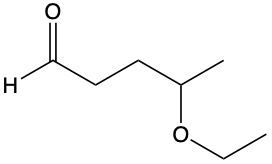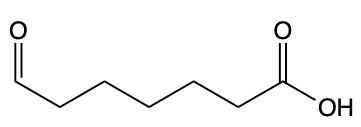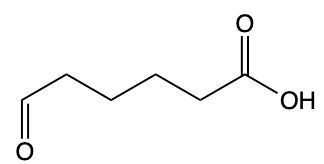Now when it comes to naming compounds with multiple functional groups, we're going to say that priorities must be considered. And we're going to say that the functional group with the highest priority is named as the parent chain, and all other functional groups will be named as substituents. When it comes to functional group priorities, this is the order that you need to keep in mind. So carboxylic acids reign supreme. They have the highest priority of all the functional groups, followed by aldehydes, then ketones, then alcohols, then amines, and then ethers. These are the functional groups that we've curated because they're the ones that are usually mixed together within a multifunctional group compound. Now the memory tool we can use here is that cool alligators keep all animals excited. So this will help us remember cool for carboxylic acids, alligators for aldehydes, keep for ketones, all for alcohols, animals for amines, and then excited for ethers. Right. So just remember, the highest priority functional group forms the end of the name as the parent chain. All other functional groups will be substituents.
- 1. Matter and Measurements4h 29m
- What is Chemistry?5m
- The Scientific Method9m
- Classification of Matter16m
- States of Matter8m
- Physical & Chemical Changes19m
- Chemical Properties8m
- Physical Properties5m
- Intensive vs. Extensive Properties13m
- Temperature (Simplified)9m
- Scientific Notation13m
- SI Units (Simplified)5m
- Metric Prefixes24m
- Significant Figures (Simplified)11m
- Significant Figures: Precision in Measurements7m
- Significant Figures: In Calculations19m
- Conversion Factors (Simplified)15m
- Dimensional Analysis22m
- Density12m
- Specific Gravity9m
- Density of Geometric Objects19m
- Density of Non-Geometric Objects9m
- 2. Atoms and the Periodic Table5h 23m
- The Atom (Simplified)9m
- Subatomic Particles (Simplified)12m
- Isotopes17m
- Ions (Simplified)22m
- Atomic Mass (Simplified)17m
- Atomic Mass (Conceptual)12m
- Periodic Table: Element Symbols6m
- Periodic Table: Classifications11m
- Periodic Table: Group Names8m
- Periodic Table: Representative Elements & Transition Metals7m
- Periodic Table: Elemental Forms (Simplified)6m
- Periodic Table: Phases (Simplified)8m
- Law of Definite Proportions9m
- Atomic Theory9m
- Rutherford Gold Foil Experiment9m
- Wavelength and Frequency (Simplified)5m
- Electromagnetic Spectrum (Simplified)11m
- Bohr Model (Simplified)9m
- Emission Spectrum (Simplified)3m
- Electronic Structure4m
- Electronic Structure: Shells5m
- Electronic Structure: Subshells4m
- Electronic Structure: Orbitals11m
- Electronic Structure: Electron Spin3m
- Electronic Structure: Number of Electrons4m
- The Electron Configuration (Simplified)22m
- Electron Arrangements5m
- The Electron Configuration: Condensed4m
- The Electron Configuration: Exceptions (Simplified)12m
- Ions and the Octet Rule9m
- Ions and the Octet Rule (Simplified)8m
- Valence Electrons of Elements (Simplified)5m
- Lewis Dot Symbols (Simplified)7m
- Periodic Trend: Metallic Character4m
- Periodic Trend: Atomic Radius (Simplified)7m
- 3. Ionic Compounds2h 18m
- Periodic Table: Main Group Element Charges12m
- Periodic Table: Transition Metal Charges6m
- Periodic Trend: Ionic Radius (Simplified)5m
- Periodic Trend: Ranking Ionic Radii8m
- Periodic Trend: Ionization Energy (Simplified)9m
- Periodic Trend: Electron Affinity (Simplified)8m
- Ionic Bonding6m
- Naming Monoatomic Cations6m
- Naming Monoatomic Anions5m
- Polyatomic Ions25m
- Naming Ionic Compounds11m
- Writing Formula Units of Ionic Compounds7m
- Naming Ionic Hydrates6m
- Naming Acids18m
- 4. Molecular Compounds2h 18m
- Covalent Bonds6m
- Naming Binary Molecular Compounds6m
- Molecular Models4m
- Bonding Preferences6m
- Lewis Dot Structures: Neutral Compounds (Simplified)8m
- Multiple Bonds4m
- Multiple Bonds (Simplified)6m
- Lewis Dot Structures: Multiple Bonds10m
- Lewis Dot Structures: Ions (Simplified)8m
- Lewis Dot Structures: Exceptions (Simplified)12m
- Resonance Structures (Simplified)5m
- Valence Shell Electron Pair Repulsion Theory (Simplified)4m
- Electron Geometry (Simplified)8m
- Molecular Geometry (Simplified)11m
- Bond Angles (Simplified)11m
- Dipole Moment (Simplified)15m
- Molecular Polarity (Simplified)7m
- 5. Classification & Balancing of Chemical Reactions3h 17m
- Chemical Reaction: Chemical Change5m
- Law of Conservation of Mass5m
- Balancing Chemical Equations (Simplified)13m
- Solubility Rules16m
- Molecular Equations18m
- Types of Chemical Reactions12m
- Complete Ionic Equations18m
- Calculate Oxidation Numbers15m
- Redox Reactions17m
- Spontaneous Redox Reactions8m
- Balancing Redox Reactions: Acidic Solutions17m
- Balancing Redox Reactions: Basic Solutions17m
- Balancing Redox Reactions (Simplified)13m
- Galvanic Cell (Simplified)16m
- 6. Chemical Reactions & Quantities2h 35m
- 7. Energy, Rate and Equilibrium3h 46m
- Nature of Energy6m
- First Law of Thermodynamics7m
- Endothermic & Exothermic Reactions7m
- Bond Energy14m
- Thermochemical Equations12m
- Heat Capacity19m
- Thermal Equilibrium (Simplified)8m
- Hess's Law23m
- Rate of Reaction11m
- Energy Diagrams12m
- Chemical Equilibrium7m
- The Equilibrium Constant14m
- Le Chatelier's Principle23m
- Solubility Product Constant (Ksp)17m
- Spontaneous Reaction10m
- Entropy (Simplified)9m
- Gibbs Free Energy (Simplified)18m
- 8. Gases, Liquids and Solids3h 25m
- Pressure Units6m
- Kinetic Molecular Theory14m
- The Ideal Gas Law18m
- The Ideal Gas Law Derivations13m
- The Ideal Gas Law Applications6m
- Chemistry Gas Laws16m
- Chemistry Gas Laws: Combined Gas Law12m
- Standard Temperature and Pressure14m
- Dalton's Law: Partial Pressure (Simplified)13m
- Gas Stoichiometry18m
- Intermolecular Forces (Simplified)19m
- Intermolecular Forces and Physical Properties11m
- Atomic, Ionic and Molecular Solids10m
- Heating and Cooling Curves30m
- 9. Solutions4h 10m
- Solutions6m
- Solubility and Intermolecular Forces18m
- Solutions: Mass Percent6m
- Percent Concentrations10m
- Molarity18m
- Osmolarity15m
- Parts per Million (ppm)13m
- Solubility: Temperature Effect8m
- Intro to Henry's Law4m
- Henry's Law Calculations12m
- Dilutions12m
- Solution Stoichiometry14m
- Electrolytes (Simplified)13m
- Equivalents11m
- Molality15m
- The Colligative Properties15m
- Boiling Point Elevation16m
- Freezing Point Depression9m
- Osmosis16m
- Osmotic Pressure9m
- 10. Acids and Bases3h 29m
- Acid-Base Introduction11m
- Arrhenius Acid and Base6m
- Bronsted Lowry Acid and Base18m
- Acid and Base Strength17m
- Ka and Kb12m
- The pH Scale19m
- Auto-Ionization9m
- pH of Strong Acids and Bases9m
- Acid-Base Equivalents14m
- Acid-Base Reactions7m
- Gas Evolution Equations (Simplified)6m
- Ionic Salts (Simplified)23m
- Buffers25m
- Henderson-Hasselbalch Equation16m
- Strong Acid Strong Base Titrations (Simplified)10m
- 11. Nuclear Chemistry56m
- BONUS: Lab Techniques and Procedures1h 38m
- BONUS: Mathematical Operations and Functions47m
- 12. Introduction to Organic Chemistry1h 34m
- 13. Alkenes, Alkynes, and Aromatic Compounds2h 12m
- 14. Compounds with Oxygen or Sulfur1h 6m
- 15. Aldehydes and Ketones1h 1m
- 16. Carboxylic Acids and Their Derivatives1h 11m
- 17. Amines38m
- 18. Amino Acids and Proteins1h 51m
- 19. Enzymes1h 37m
- 20. Carbohydrates1h 46m
- Intro to Carbohydrates4m
- Classification of Carbohydrates4m
- Fischer Projections4m
- Enantiomers vs Diastereomers8m
- D vs L Enantiomers8m
- Cyclic Hemiacetals8m
- Intro to Haworth Projections4m
- Cyclic Structures of Monosaccharides11m
- Mutarotation4m
- Reduction of Monosaccharides10m
- Oxidation of Monosaccharides7m
- Glycosidic Linkage14m
- Disaccharides7m
- Polysaccharides7m
- 21. The Generation of Biochemical Energy2h 8m
- 22. Carbohydrate Metabolism2h 22m
- 23. Lipids2h 26m
- Intro to Lipids6m
- Fatty Acids25m
- Physical Properties of Fatty Acids6m
- Waxes4m
- Triacylglycerols12m
- Triacylglycerol Reactions: Hydrogenation8m
- Triacylglycerol Reactions: Hydrolysis13m
- Triacylglycerol Reactions: Oxidation7m
- Glycerophospholipids15m
- Sphingomyelins13m
- Steroids15m
- Cell Membranes7m
- Membrane Transport10m
- 24. Lipid Metabolism1h 45m
- 25. Protein and Amino Acid Metabolism1h 37m
- 26. Nucleic Acids and Protein Synthesis2h 54m
- Intro to Nucleic Acids4m
- Nitrogenous Bases16m
- Nucleoside and Nucleotide Formation9m
- Naming Nucleosides and Nucleotides13m
- Phosphodiester Bond Formation7m
- Primary Structure of Nucleic Acids11m
- Base Pairing10m
- DNA Double Helix6m
- Intro to DNA Replication20m
- Steps of DNA Replication11m
- Types of RNA10m
- Overview of Protein Synthesis4m
- Transcription: mRNA Synthesis9m
- Processing of pre-mRNA5m
- The Genetic Code6m
- Introduction to Translation7m
- Translation: Protein Synthesis18m
Functional Group Priorities - Online Tutor, Practice Problems & Exam Prep
 Created using AI
Created using AIWhen naming compounds with multiple functional groups, prioritize the highest-ranking functional group as the parent chain. The order of priority is: carboxylic acids, aldehydes, ketones, alcohols, amines, and ethers. Use specific prefixes for substituents: alkoxy for ethers, amino for amines, hydroxy for alcohols, and oxo for aldehydes or ketones. Remember the mnemonic "cool alligators keep all animals excited" to recall the order of functional groups. This systematic approach is essential for accurately identifying and naming complex organic compounds.
Functional Group Priorities Concept 1
Video transcript
Functional Group Priorities Example 1
Video transcript
Here it says to provide parent chain names for each compound. In A, we have two functional groups present. We have an amine here and then we have an alcohol. Remember, the priority when it comes to functional groups has alcohols having higher priority than amines. Because of that, the parent chain is the one that's going to include the alcohol. And if we just name the alcohol within a vacuum, meaning we're not paying attention to the amine portion, what would the alcohol chain be called? Well, we'd start numbering from the end closest to the OH, so 1, 2, 3, 4, 5, 6, 7. The alcohol is on carbon number 1, so that'd be 1, and then 7 carbons is hept, and then it's an alcohol, so heptanol.
For the next one, we have a carboxylic acid group here and then we have a ketone group here. Remember, carboxylic acids reign supreme. They are the highest priority functional group. So, we're going to pay attention to that. So, if we're just looking at the carboxylic acid part and ignoring the ketone because we're just concerned with the parent chain, what would it be called? So we would say it'd be 1, 2, 3, 4. Four carbons here would be butanoic acid. Now we have a methyl group attached, we have a ketone attached. They also be incorporated into the name as well. But for right now, we're just concerned with what the parent chain would be. So again, remember, the highest priority functional group forms the parent chain name. Everything else will be a substituent.
Substituent Prefixes Concept 2
Video transcript
Now we're going to say if a functional group is named as a substituent, then it must use the prefixes listed below. So let's say that we have an ether portion that is a substituent. It'll be called an alkoxy group. Now, what do I mean by that? Well, let's say that the ether portion was an OCH3. CH3 is methyl, but because of the oxygen present, it would become methoxy. If we had an ethyl group attached to the oxygen, it's no longer ethyl; it's ethoxy. So that's what we mean by an alkoxy. Next, if we had an amine group, it'd be called amino as a substituent. And alcohol as a substituent is called hydroxy. And then finally, if we had an aldehyde or ketone as a substituent, they would be oxo. So keep these names in mind when each of these functional groups becomes a substituent.
Substituent Prefixes Example 2
Video transcript
So here it says provide the systematic name for the given molecule. Remember our memory tool. We're going to say here, "Cool alligators keep all animals excited." Here, that would mean that our ketone here would have higher priority than our alcohol. So our alcohol will be a substituent. Because the ketone has higher priority, we're going to start numbering from the end closer to it. So, we're going to say here 1, 2, 3, 4, 5, 6, 7, 8. Oh, when it's a substituent, it's called hydroxy. It's on carbon 7, so this would be 7-hydroxy. The ketone carbonyl is on carbon 3, so it would be 3. It is an 8 carbon chain, so it's octen, and then remember it's not octane anymore, since it's a ketone, we change the 'e' ending to -one, so it becomes octano. So the IUPAC name or systematic name of this structure would be 7-hydroxy-3-octanone.
Provide IUPAC name for following.
4-amino-3,3-dimethylpentanoic acid
4-amine-3-dimethylpentanoic acid
2-amino-3-dimethylpentaneoic acid
2-amine-3,3-dimethylpentanoic acid
Provide IUPAC name for following.
4-propoxypentanal
3-ethoxybutanal
2-ethoxypentanol
4-ethoxypentanal
Draw a structure for 7-oxoheptanoic acid.
Do you want more practice?
Here’s what students ask on this topic:
What is the order of priority for functional groups in organic chemistry?
The order of priority for functional groups in organic chemistry is crucial for naming compounds with multiple functional groups. The priority order is as follows: carboxylic acids, aldehydes, ketones, alcohols, amines, and ethers. This means that carboxylic acids have the highest priority, followed by aldehydes, then ketones, alcohols, amines, and finally ethers. This order helps determine which functional group will be named as the parent chain and which will be named as substituents. A useful mnemonic to remember this order is 'cool alligators keep all animals excited,' where each word represents a functional group in the priority order.
 Created using AI
Created using AIHow do you name a compound with multiple functional groups?
When naming a compound with multiple functional groups, you must prioritize the highest-ranking functional group as the parent chain. The functional group with the highest priority will determine the suffix of the compound's name. All other functional groups will be named as substituents using specific prefixes. For example, ethers are named as alkoxy groups, amines as amino groups, alcohols as hydroxy groups, and aldehydes or ketones as oxo groups. The order of priority is carboxylic acids, aldehydes, ketones, alcohols, amines, and ethers. This systematic approach ensures accurate and consistent naming of complex organic compounds.
 Created using AI
Created using AIWhat is the mnemonic to remember the order of functional group priorities?
The mnemonic to remember the order of functional group priorities is 'cool alligators keep all animals excited.' This mnemonic helps recall the priority order: carboxylic acids (cool), aldehydes (alligators), ketones (keep), alcohols (all), amines (animals), and ethers (excited). Using this mnemonic can make it easier to remember which functional group has the highest priority when naming compounds with multiple functional groups.
 Created using AI
Created using AIWhat prefixes are used for functional groups when they are substituents?
When functional groups are named as substituents, specific prefixes are used. For ethers, the prefix is 'alkoxy,' such as methoxy for OCH3 or ethoxy for OCH2CH3. For amines, the prefix is 'amino.' For alcohols, the prefix is 'hydroxy.' For aldehydes and ketones, the prefix is 'oxo.' These prefixes help identify the functional groups when they are not the highest priority in the compound's name.
 Created using AI
Created using AIWhy is it important to consider functional group priorities in organic chemistry?
Considering functional group priorities in organic chemistry is important because it ensures accurate and systematic naming of compounds with multiple functional groups. The highest priority functional group determines the parent chain and the suffix of the compound's name, while other functional groups are named as substituents with specific prefixes. This approach helps avoid confusion and maintains consistency in chemical nomenclature, making it easier to communicate and understand the structure and properties of complex organic compounds.
 Created using AI
Created using AI





